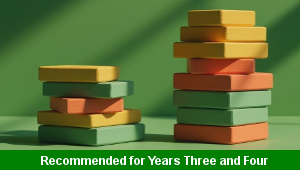Lesson Two – Supporting Structures

This design technology teaching pack for Key Stage Two gets the children to investigate and record some of the different ways of supporting a range of shapes and materials in the construction of a building material.
The class can identify and explain how to combine a range of different materials to strengthen a particular structure as part of a model such as adding a framework or side supports.
Download this teaching pack including a lesson plan, classroom activities and an interactive presentation to investigate and record some of the different ways of supporting a range of shapes and materials in the construction of a building material
Activities in this teaching pack include display posters to identify and describe different structures that can be used to support constructions and compare shapes that could be used for different building supports and a worksheet to record how to add materials to provide support to different structures.
The interactive presentation can be used to explore some of the different ways of supporting a range of shapes and materials in a construction of a specific type of building.
This lesson is part of a design technology scheme of work to get the children to select, shape and combine different materials to plan, build and test a model of a garden construction suitable for growing plants and flowers. There are teaching activities for shared learning, differentiated worksheets to support independent learning and interactive presentations to introduce concepts and key skills.
-

English Spelling Assessment
Assess abilities in spelling different vocabulary words based on the National Curriculum programmes of study for Key Stage Two
-

Subtraction Differences
Explain and model some of the informal and formal written calculations skills that can be used to find the difference between pairs of two and three digit numbers
-

Fraction Equivalence
Investigate, compare and record the values of different non-unit fractions using equivalence between their sets of matching numerators and denominators
-

World Wars Poems
Explore and reflect on how poets can use figurative language and verse structures to express themes and ideas about conflicts that have happened in the world
